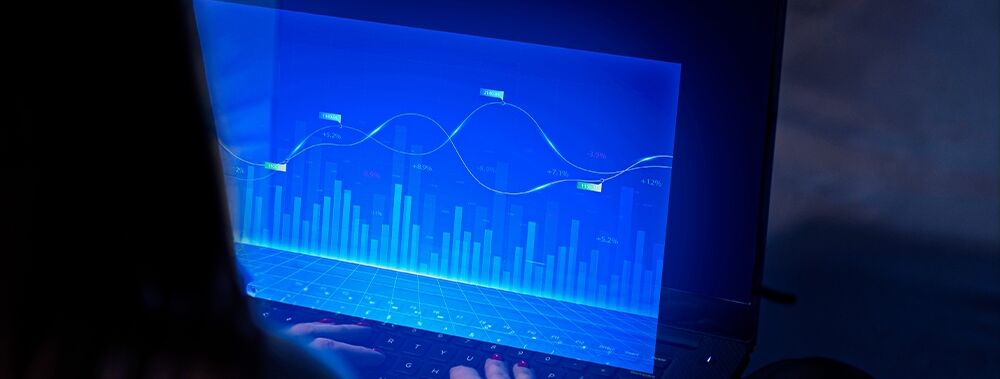About the 4flow trend monitor
Get a closer look at market developments, technological innovation and trends related to supply chain management. The 4flow trend monitor is a resource for supply chain decision makers to understand upcoming trends and shape their strategy accordingly.
The 4flow trend monitor combines advanced qualitative and quantitative analysis of primary and secondary sources with the market knowledge of 4flow research as well as the 4flow consulting, 4flow management and 4flow software business lines. It is regularly updated to reflect the dynamics of today’s rapidly changing world.
Find actionable insights on 20 top trends sorted into three sections: macroeconomics, sustainability and resilience, and digital transformation. Scroll to learn more.
Last update: December 2023
Sustainability and resilience
More than just a buzzword
Supply chain sustainability is more than just reducing carbon emissions or using less packaging. Sustainable supply chains are set up for the long-term. They are planned realistically, well established and scalable with regards to their footprints, technology and processes. Resilience is a measurement of a supply chain’s ability to withstand disruptions and recover from the negative impact of disruptive events.
Determining future readiness
Sustainability and resilience, sometimes grouped together as supply chain viability, determine a supply chain’s capability to still deliver in the future, despite the many risks that affect operations – which include both environmental risks like floods or droughts and other risks that go along with a quickly changing world, such as government regulations, wars and conflicts, or shortages.
Explore trends
Sustainability and resilience trends at a glance
Macroeconomics
Supply chains: intertwined with market conditions
General market conditions shape supply chain: a rise in GDP generally leads to more supply chain activities, as well. As political leaders aim to multiply the wealth of their countries and voters, politics define economics – and vice versa. On the one hand, businesses are under cost pressure and affected by developments like labor shortages. On the other hand, the supply chain industry eventually manages to fulfill new demands of consumer markets by adapting operations.
Creating opportunities – and complexity
Legislation around the world is redefining some of the legal framework in which supply chains operate. Countries aim to reduce international dependencies, increase protectivism and integrate political ambitions into trade rules. These tendencies add complexity to global networks. Meanwhile, recent global events from political conflicts to labor strikes have changed the supply chain landscape, bringing some major logistics players more success and making room for new business opportunities. Digitization enables much of this growth, while at the same time creating new customer expectations in terms of visibility and buyer experience, in both B2B and B2C environments.
Explore trends
Macroeconomics trends at a glance
Digital transformation
In the middle of a digital revolution
With the fourth industrial revolution, digital connectivity plays an ever more important role in many parts of personal and professional life. Innovative new technologies will have long-lasting effects on the way business is done. As rapid digital developments make new products, strategies and best practices available, businesses need to know where to focus their resources – and when to do it.
Explore trends
From machine learning to automation, a landscape of digital opportunities
The supply chain industry, too, is increasingly digital. Paper-based processes have been replaced by digital ones in many places. Artificial intelligence can be used to automate processes in planning and execution. At the same time, digitally supported physical technologies are continuously developed. Advancements in robotics enable the reliable automation of intralogistics processes, for instance. Other technologies like 3D printing might even make way for a reconfiguration of supply chains, for instance if suppliers of printable parts are replaced by suppliers of raw materials.
With so many developments, take a closer look at two major areas of digitization:
Digital transformation trends at a glance
Top trends to follow
The 4flow trend monitor ranks trends in terms of both impact and timeliness. Impact measures the degree of influence a trend will have on supply chain strategy and operations. Timeliness indicates how soon the trend will reach its full potential impact.
Ranked highest in impact and timeliness, these trends merit ongoing observation. Click on a trend to learn more.
 ...
...
Bitte einen Moment Geduld.
Die Interaktive Grafik wird geladen ...
 ...
...
Please wait a moment.
The Interaktive Grafik is loading...
Authors

Holger Clasing
Vice President and Head of Strategy Practice
4flow consulting

Wendelin Gross
Head of
4flow research

Gero Holzheid
Supply Chain Scientist
4flow research




